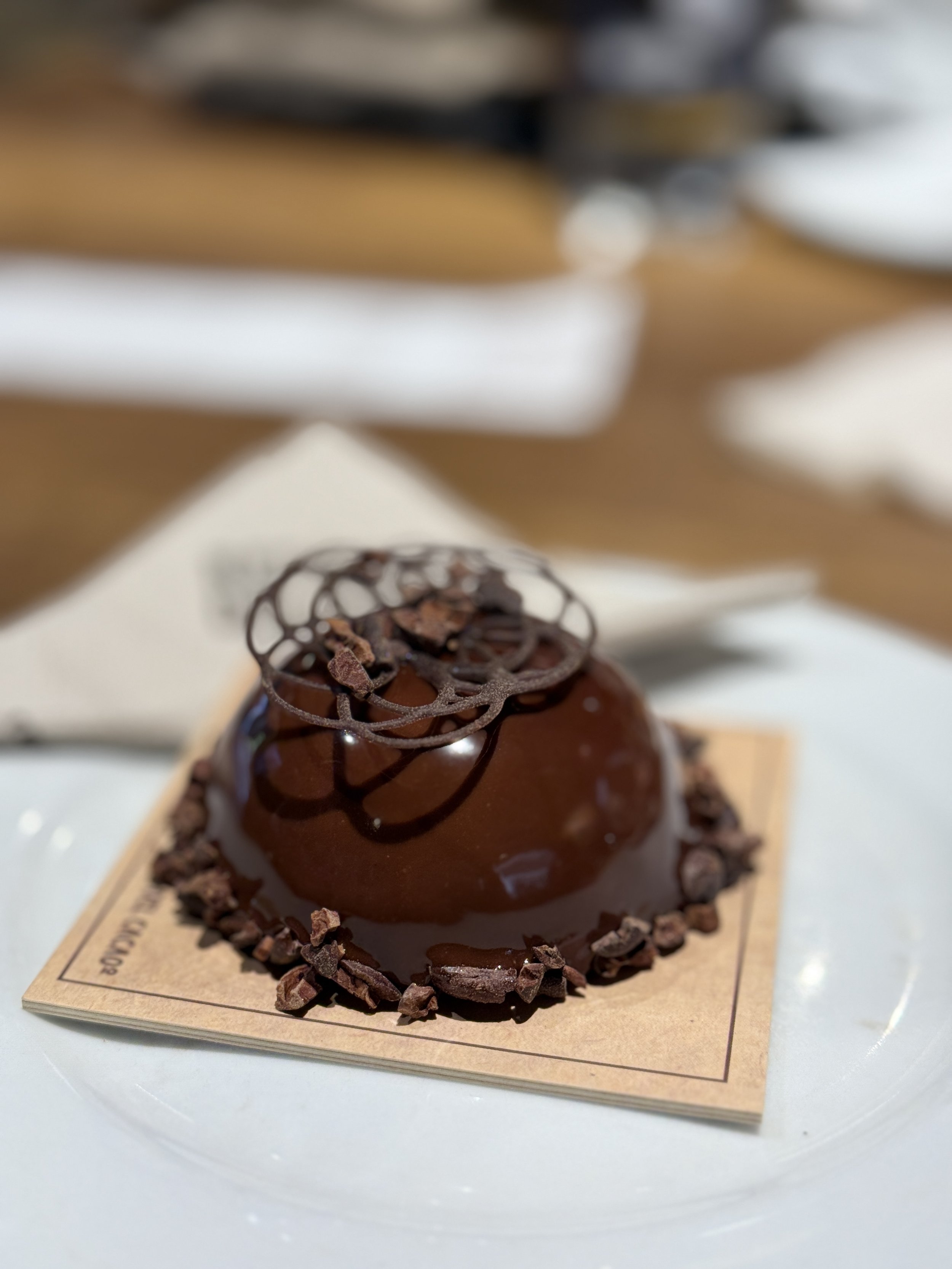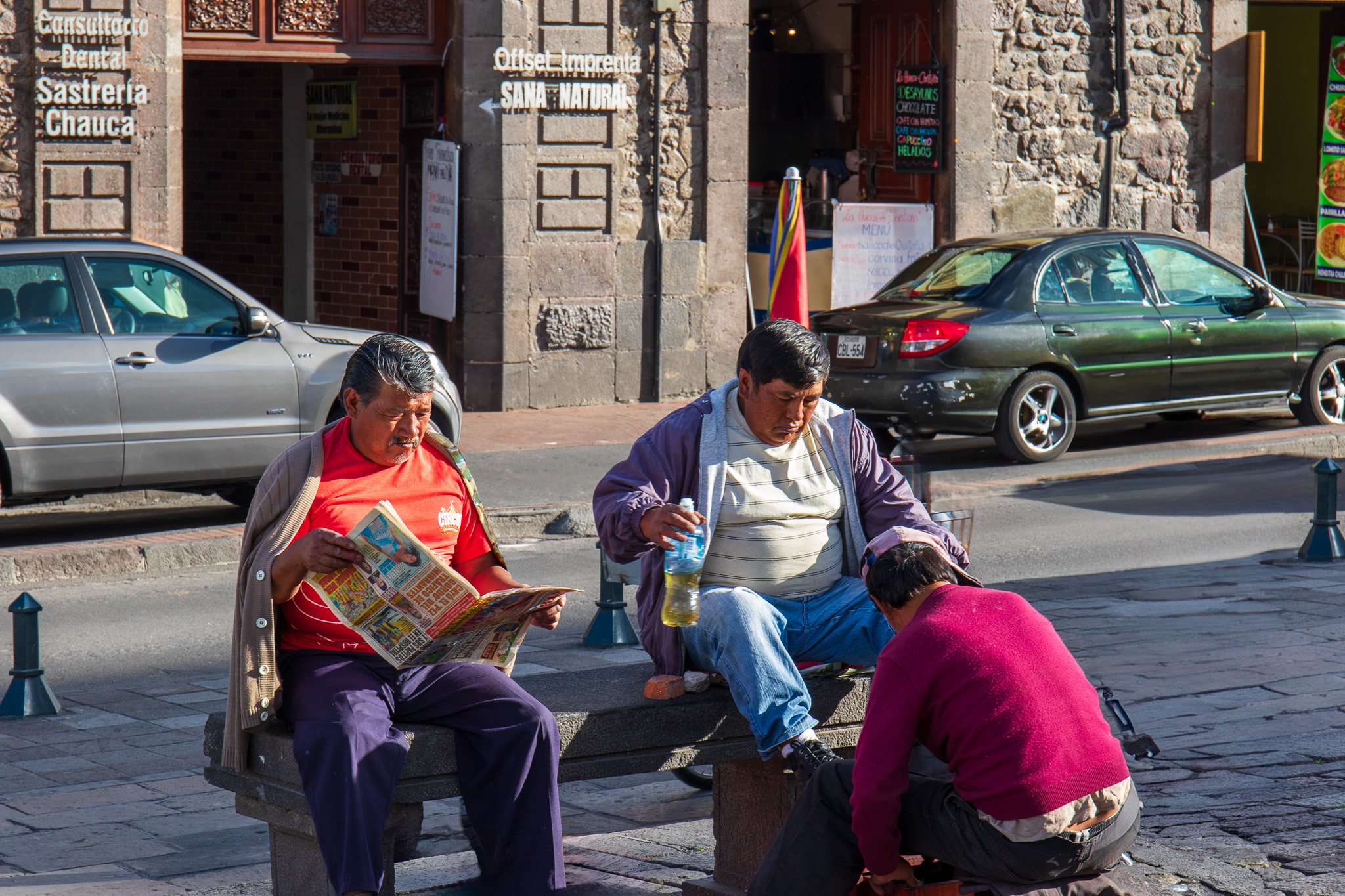My Photography & Travel Guide to Quito, Ecuador
Updated Feb 2025
Quito is—quite literally—breathtaking. It is a dream location for photographers as the world’s second-highest capital city, at an altitude of 9,350 feet, and the first city ever designated a UNESCO World Heritage Site. Perched high in the Andes, Quito, Ecuador, is a city of stunning contrasts and timeless beauty. Did you know that Quito is the closest capital city to the equator?
From its colonial Old Town with stunning baroque churches to the modern high-rises and surrounding cloud forests, Quito offers a mix of urban and natural beauty, making it one of South America’s most photogenic destinations.
The city's dramatic setting squeezed between mountain peaks and straddling two hemispheres has always lured visitors, but its best-kept secrets are hidden in the narrow cobblestone streets, candlelit monasteries, and leafy plazas which you will find walking around the old town.
Whether you’re a seasoned travel photographer or a casual traveler with a camera in hand, this guide will help you uncover the best locations, accommodations, dining spots, and photography tips for an unforgettable visit to Quito.
Where to Stay: Luxury and Comfort in Quito
The best area to stay in Quito for both convenience and photography opportunities is La Mariscal. This lively neighborhood is close to major attractions and has cafes, parks, and cultural spots. If you prefer a more historic atmosphere, the Old Town (Centro Histórico) is another fantastic option, offering charming colonial architecture right outside your door.
Luxury Hotels (5-Star)
Casa Gangotena – A stunning boutique hotel in the Old Town, offering elegant rooms and rooftop views of Plaza San Francisco.
Hotel Plaza Grande – A historic luxury hotel with opulent interiors and unbeatable views of Plaza de la Independencia.
Illa Experience Hotel – A charming, high-end boutique stay in San Marcos, blending Ecuadorian culture with modern comfort.
Mid-Range Hotels (3-4 Star)
Hotel Mama Cuchara – A stylish boutique hotel in the Old Town with an artsy vibe and a fantastic rooftop terrace.
Hotel Finlandia – A modern, affordable option in La Carolina, ideal for travelers who want a more contemporary stay.
Ikala Quito Hotel – A beautiful boutique hotel in La Mariscal, offering cozy rooms with a colonial feel.
The Casa Gangotena has a stunning roof top restaurant with incredible views of the old town.
Best Airport Hotel for Travelers Continuing to the Galápagos, Cloud Forest, or Amazon
If you're planning to visit the Galápagos Islands, the Cloud Forest, or the Amazon, staying near Mariscal Sucre International Airport is a smart choice for early-morning flights or late-night arrivals. The Wyndham Quito Airport Hotel is the perfect option.
Convenience: Avoid the long drive from the city center to the airport, especially for early flights.
Comfort: Spacious, modern rooms and excellent amenities, including a spa and restaurant.
Ideal for Transit: A great stopover if you're arriving late and heading directly to Ecuador’s remote destinations the next morning.
Best Time to Visit & How Long to Stay
Best Time to Visit: The dry season (June to September) offers the best conditions for photography. The rainy season (October to May) creates dramatic cloudscapes but may affect travel plans.
Recommended Stay: 3-5 days is ideal for exploring Quito at a relaxed pace while still allowing time for day trips to Mitad del Mundo or Cotopaxi National Park.
Getting Around Quito
Taxis: Official taxis are safe, but always ensure they use a meter.
Uber & Cabify: Convenient and safe ride-hailing options.
Public Transport: The Trolebús and Ecovía are affordable but can be crowded.
Walking: The Old Town is best explored on foot, but be mindful of the altitude.
Recommended Tour Guide in Quito
For a truly immersive experience in Quito, I highly recommend taking a tour with Juan Carlos Guerra JCG Logistics. He is a super friendly and knowledgeable guide. He gave us a fantastic tour covering Quito’s history, culture, chocolate tasting, and hidden gems, making our trip informative and unforgettable.
Where to Eat
You'll find Quito's best traditional eateries in the city's compact 16th-century Centro Histórico (Old Town). Seco de chivo (braised goat stew) and patacones (plantain fritters) are Ecuadorean classics. Quesadillas quiteñas (quesadillas from Quito), which are filled with queso dulce and are much more like a pastry than a Mexican quesadilla, are a local favorite and dipped in hot chocolate.
Where to Eat & Drink: Best Restaurants & Cafés in Quito
Best Restaurants
Zazu – A Michelin-starred restaurant offering modern Ecuadorian cuisine.
URKO – An immersive dining experience inspired by Ecuador’s diverse regions.
Hasta La Vuelta, Señor – A fantastic spot for traditional locro de papa and empanadas de viento.
Where to Try Ecuadorian Chocolate
Republica del Cacao – A must-visit for chocolate lovers, offering artisanal Ecuadorian chocolate sourced from local farmers.
Pacari Chocolate Experience – Ecuador’s award-winning organic chocolate brand, with tastings and workshops available.
Photography Gear to Bring
Camera: A full-frame DSLR or mirrorless camera like the Canon R6, Sony A7 IV, or Nikon Z7.
Lenses:
Wide-angle (16-35mm) – Ideal for cityscapes and churches.
Standard zoom (24-70mm) – Great all-around lens for street photography.
Telephoto (70-200mm or 100-500mm) – Useful for mountain shots and capturing distant details.
Tripod: Essential for night photography and long exposures.
ND Filters: These are useful for capturing waterfalls near Quito.
Top 10 Photography Locations in Quito
Quito’s historic center is recognized as having the best-preserved, least-altered historic center in all of Latin America. In 1978, it became the first city in the world to be declared a UNESCO World Heritage Site.
Plaza de la Independencia -
Independence Square is the principal and central public square of Quito, Ecuador. This is a very busy and lively square full of people.
Plaza de la Independencia (Independence Square), also known as Plaza Grande, is one of the most iconic and historically significant landmarks in Quito, Ecuador. Situated in the heart of the city’s Old Town, a UNESCO World Heritage Site, it serves as a hub of cultural and political activity.
La Compañía de Jesús
La Compañia is considered the most ornate church in Ecuador. It took 160 years to build (1605-1765). The church is renowned for its breathtaking interior, adorned with approximately seven tons of gold leaf, gilded plaster, and intricate wood carvings, making it one of the most ornate churches in South America.
Although its dominant architectural style is Baroque, it also includes Moorish elements (like the geometric shapes on the church’s pillars), stucco decoration in the Churrigueresque style, and Neoclassical touches in the chapel. It is beautiful to photograph at night.
The Churches Are Beautifully Lit at Night
The central nave is completely covered in gold and is incredibly ornate and lavish.
TelefériQo
It is located on the second-highest cable car, located on the eastern side of Pichincha Volcano. The views are amazing. But remember, you will be nearly 13,000 feet or (4,000 meters), so it can be hard for some people to breathe. They actually have Oxygen stations on top, just in case you feel short of breath.
I would recommend buying a round-trip ticket since the walk down is very long. The views are completely worth it, though.
Basílica del Voto Nacional
The Basílica Del Voto Nacional is the largest neo-Gothic church in South America. According to local legend, the world will end if the basilica's construction is ever officially completed.
The Basílica del Voto Nacional is located on the corner of Venezuela and Carchi in central Quito, seven blocks northeast of Plaza de la Independencia
Plaza San Francisco
In the city of Quito you will find the cobbled Plaza de San Francisco - one of the oldest and most beautiful sights in the city.
Behind it towers the striking white Monastery of San Francisco. This was traditionally an area where native people would come to trade.
Today you can take a seat at one of the cafés located here and watch the many tourists and Quiteno people strolling along as they get on with their business.
El Panecillo
The Virgen de El Panecillo stands on a hill in the center of Quito, visible everywhere in the city. It is not only the tallest aluminum statue in the world but also the world’s tallest winged representation of the Virgin Mary.
La Ronda
La Ronda is a wonderful area for street photography. This Unesco-listed historic district has a long, curvy street that has become one of the Ecuadorian capital’s most treasured attractions over the years.
We really enjoyed walking down the various streets.
You will find all sorts of artisanal shops on this street, which are well worth exploring.
We were super lucky to watch one of the largest festivals in the city during our visit.
Mitad del Mundo (Cross the Equator)
You can't go to Quito and not visit the Middle of the World Monument. It is a must-do when in Ecuador in general. But I have to break this to you—the equator line is not there! When the French came, they actually measured it wrong. Years later, when scientists from all over the world came to actually measure it accurately, it turned out it was a bit off. By then, the monument was already famous and wasn't moved, but still, it is quite near the truth.
Calle de las Siete Cruces
Calle de las Siete Cruces, which means Street of the Seven Crosses, is officially García Moreno, named after the infamous early 20th-century President.
It is now home to an astonishing number of visitor sites, including the Museo de la Ciudad, the Carmen Alto Monastery, the Presidential Palace and Plaza Grande, the Numismatic Museum at the Ecuadorian Central Bank building, and La Compañía Church.
Explore the markets
Quito has many great markets, and they offer amazing opportunities to experience Ecuador’s cultural diversity. Mercado Artesanal La Mariscal has a wide selection of artisanal goods, including everything from alpaca blankets to Ecuadorian chocolates. Mercado Municipal Santa Clara is another popular market for purchasing local art and experiencing Ecuadorian craftsmanship.
The most famous market is Otavalo Market, a massive market about two hours from Quito. Seeing all the crafts made by indigenous people in the area is fascinating. You will find everything there, from traditional ponchos, hats, and outfits to local chocolate and spices.
Spend time in the Old Town
The old town is the heart of the city, and we loved exploring the area. A UNESCO World Heritage Site, the plaza features the Palacio del Gobierno, the Cathedral, and the Palacio Presidencial. Wander through the quaint streets as you take in colonial architecture and explore Quito’s rich history.
Street Art - Graffiti in Quito
Quito’s graffiti scene is a vibrant and evolving form of artistic expression that blends political commentary, indigenous heritage, and urban creativity. The city's walls, especially in areas like La Floresta, Guápulo, and parts of La Mariscal, are covered in bold murals and intricate street art that tell the stories of Ecuadorian culture, social struggles, and environmental awareness.
Special Festivals and Holidays
Quito is vibrant with festivals year-round, but the Fiestas de Quito in early December are particularly spectacular. The city celebrates its founding with parades, concerts, and cultural events, offering unique photo opportunities.
Wrapping UP
Quito is a photographer’s paradise, with a mix of colonial charm, urban energy, and natural wonders. Whether you’re capturing golden-lit churches at sunrise or the vibrant life in Plaza de la Independencia, this city will leave you in awe.
If you enjoyed this guide to Quito, you can check out my other Photography and Travel Guides at this link.
Don’t forget to subscribe to my newsletter for more travel photography tips and guides!






























































